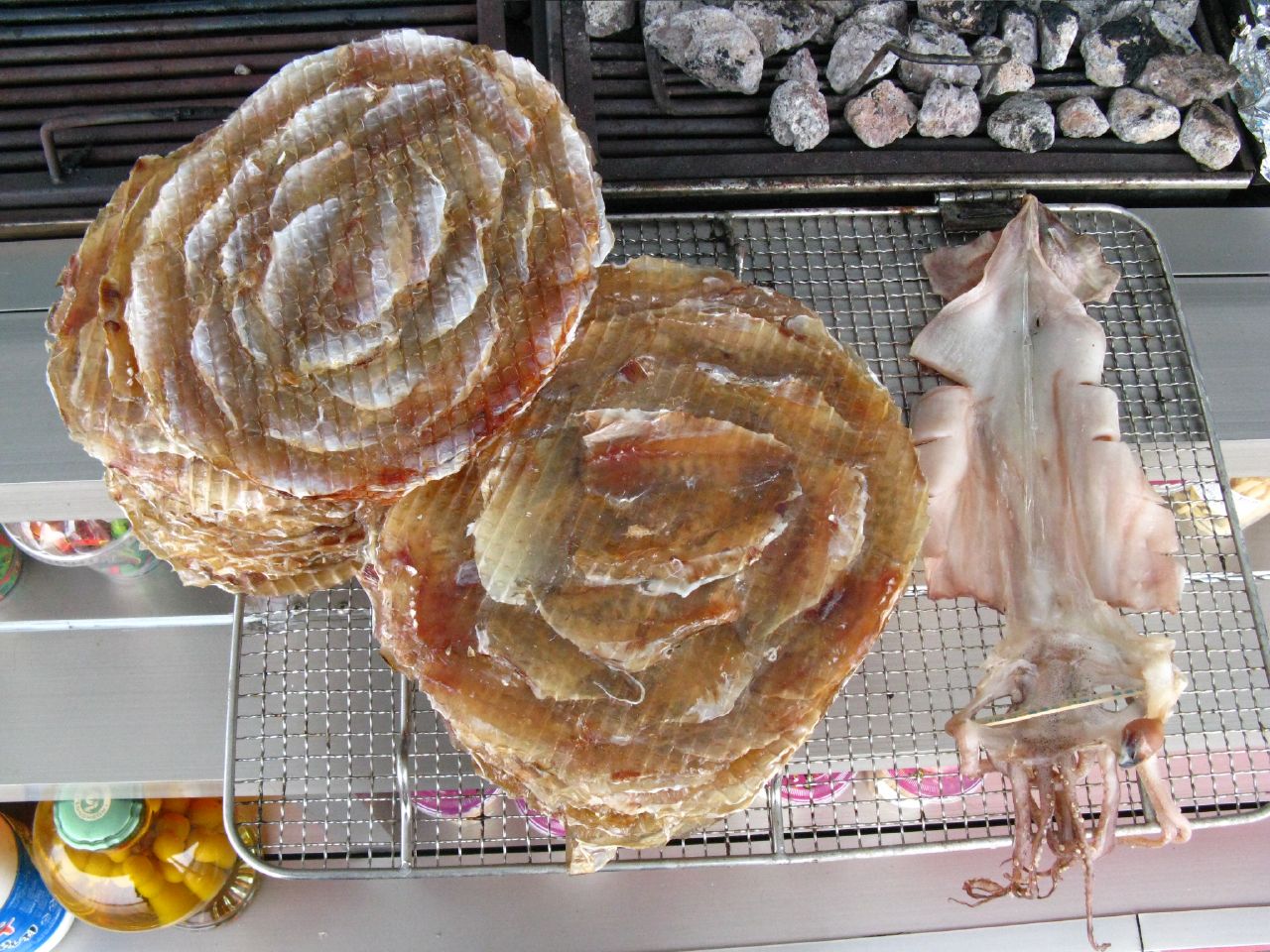Jwipo on:
[Wikipedia]
[Google]
[Amazon]
 Jwipo ( ko, 쥐포) is a traditional
Jwipo ( ko, 쥐포) is a traditional
Popular Korean Snacks
{{Dried fish and seafood Dried fish Snack foods Korean cuisine
 Jwipo ( ko, 쥐포) is a traditional
Jwipo ( ko, 쥐포) is a traditional Korea
Korea ( ko, 한국, or , ) is a peninsular region in East Asia. Since 1945, it has been divided at or near the 38th parallel, with North Korea (Democratic People's Republic of Korea) comprising its northern half and South Korea (Republic ...
n pressed fish jerky sold as a street snack. Made from the filefish
The filefish (Monacanthidae) are a diverse family of tropical to subtropical tetraodontiform marine fish, which are also known as foolfish, leatherjackets or shingles. They live in the Atlantic, Pacific and Indian Oceans. Filefish are closely r ...
(or Jwichi), it is seasoned, flattened, and dried. Jwichi meat has a subtle sweet flavor, but jwipo's sweetness comes from added sugar. It is traditionally served hot, heated on a burner until it curls.
Making process
Jwipo is made from various species of filefish, such as ''Thamnaconus modestus
The black scraper (''Thamnaconus modestus'') is a species of filefish in the family Monacanthidae. It is found in the temperate waters in the Northwest Pacific Ocean. It is commercially fished in China, and has been successfully aquacultured.NOAA ...
'' or ''Stephanolepis cirrhifer
''Stephanolepis cirrhifer'', commonly known as the thread-sail filefish, is a species of marine fish in the family Monacanthidae. It is found in the western Pacific, in an area that ranges from northern Japan to the East China Sea, to Korea. O ...
.'' First the fish is skinned and filleted, and after washing, the fillets are seasoned, by soaking in a sugar and seasoning solution, or by mixing or tumbling the fillets together with the seasoning. Then they are shaped and arranged on a drying rack. (The jwipo can be shaped free-form, or with the help of templates.) After being shaped, the jwipo is dried at low temperatures.
Consumption
Jwipo can be roasted or grilled, or eaten uncooked. You can also usegochujang
''Gochujang'' (, from Korean: , ) or red chili paste
* is a savory, sweet, and spicy fermented condiment popular in Korean cooking. It is made from gochu-garu (chili powder), glutinous rice, '' meju'' (fermented soybean) powder, ''yeotgir ...
or mayonnaise as a dip.
Jwipo can become an ingredient in banchan
''Banchan'' (, from Korean: ) or bansang are small side dishes served along with cooked rice in Korean cuisine. As the Korean language does not distinguish between singular and plural grammatically, the word is used for both one such dish o ...
such as jwipo jorim
''Jorim'' () is a simmered Korean dish, made by boiling vegetables, meat, fish, seafood, or tofu in seasoned broth until the liquid is absorbed into the ingredients and reduced down. ''Jorim'' dishes are usually soy sauce-based, but gochu ...
, jwipo braised in a gochujang-based sauce.
See also
*List of dried foods
This is a list of dried foods. Food drying is a method of food preservation that works by removing water from the food, which inhibits the growth of bacteria and has been practiced worldwide since ancient times to preserve food. Where or when d ...
References
External links
Popular Korean Snacks
{{Dried fish and seafood Dried fish Snack foods Korean cuisine